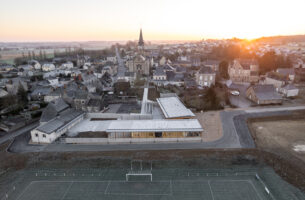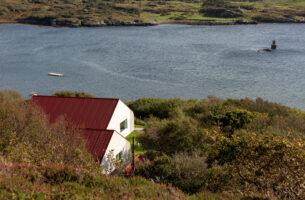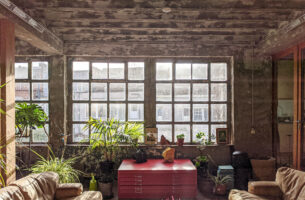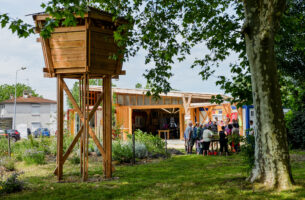aride rural éducation bois paille pierre artisanat local entretien communautaire toucher
Kindergarten for a Permaculture Community in Zimbabwe
Anna Heringer | 13 janvier 2020
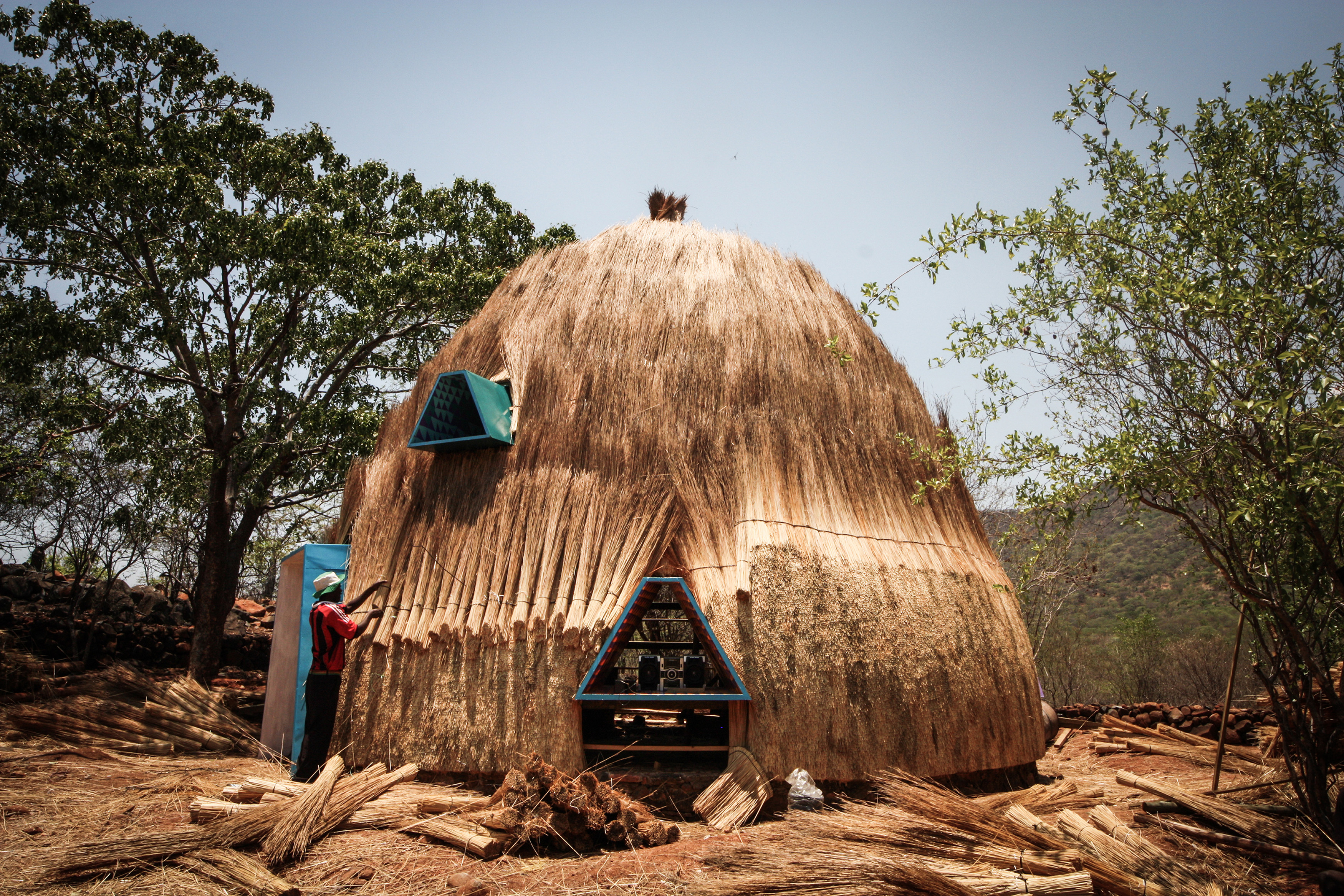
Introduction
Topophile traduira à terme toutes ses publications en français et en anglais. D'ici là, nous publions tous les articles dans leur langue originale.
who Concept & design: Anna Heringer | Project manager: Stefano Mori
what Kindergarten (52 m²), 2 buildings (26 m² each)
where Chaseyama, Zimbabwe
when Start of planning: February 2013 | Construction: January 2014 – November 2014
for whom Permaculture community PORET (1)
with whom Engineering: Laurence Kisuule
by whom Local craftsmen
how stone foundation, timber structure, thatched straw outer shell
The kindergarten is part of a permaculture education centre in Zimbabwe, and is conceived within this self-sufficiency philosophy: erected out of timber, thatch and stone, this project provides children a playground to get acquainted with the principles of nature while implementing them in daily life. It is a pilot project of a sustainable way of building that will revive the region's local crafts and know-how.
The permaculture community PORET (1) in Zimbabwe follows the philosophy of a holistic sustainability since 1996. With care, patience, time and seeds, and without any external help, they transformed a very dry area into a little fertile paradise. Within their principles they reached as far as they could, but up till now they lacked building knowledge in the same holistic approach. The PORET kindergarten will thus be the first one erected, acting as a pilot project, (re)generating local craftsmanship and building know-how. Furthermore, it is the first kindergarten in the whole rural area of the Chimanimani District, a desolate region that houses about 200 families without any access to education.
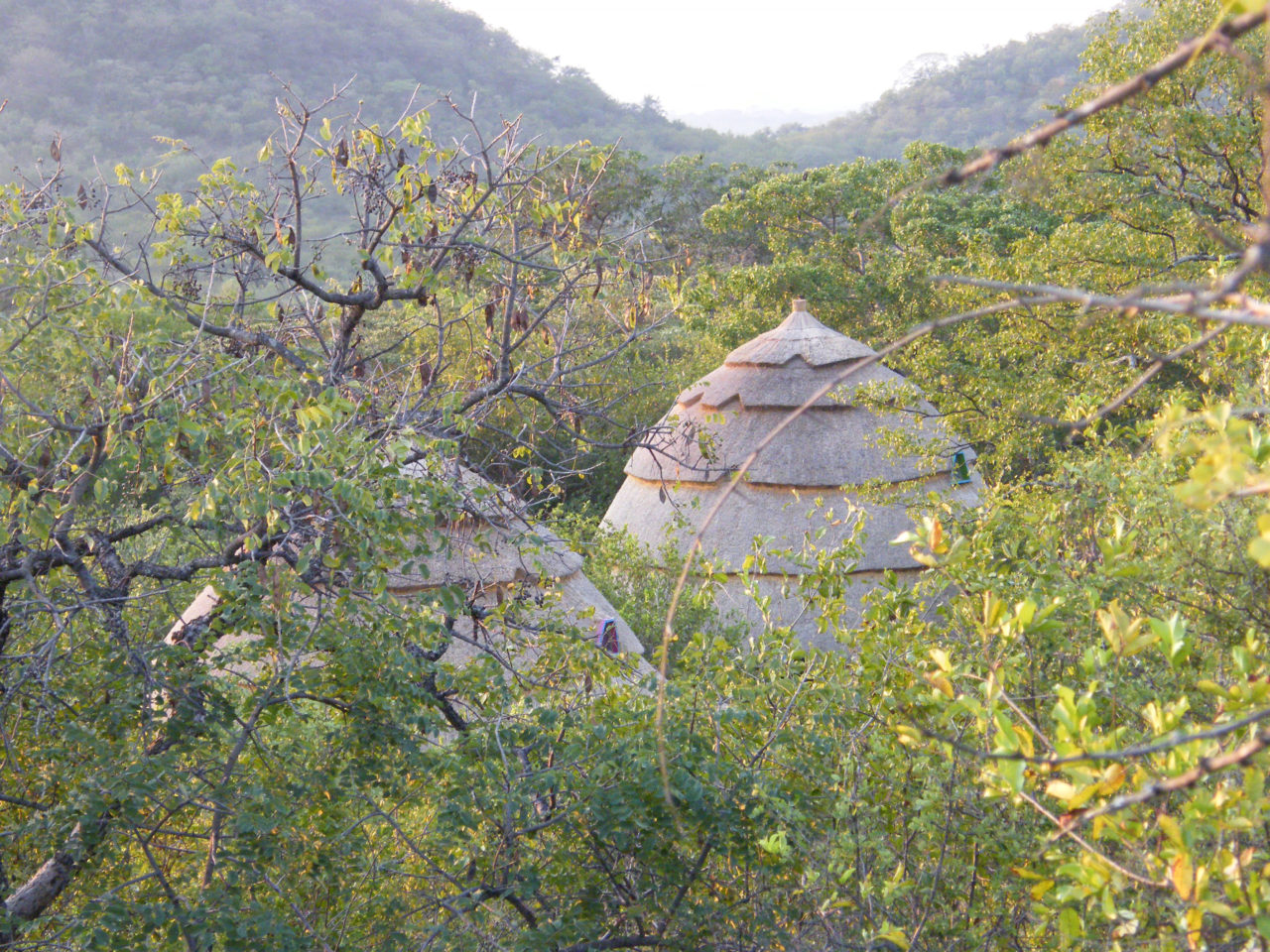
The kindergarten is strongly integrated with the permaculture activities on site. The children will learn from the very beginning to take care of plants, to be gentle with the soil, to harvest water and to understand the needs of nature. Apart from this the community also facilitates the personal development of their inhabitants, therefore the two structures will be used as training and meeting spaces for the inhabitants of the surrounding villages as well.
Founded on a stone base, timber was chosen for the main structure, as Zimbabwe is known for its forestry and the community supports tree plantation. Once completed, the wood structure was covered by thatching as there is a strong tradition of technically excellent and beautifully thatched roofs in the country. Furthermore, the traditional way of cutting the grass for thatching reduces the regions fire hazard, meanwhile performing well in low rainfall area where the climate can be harsh. Our aim is thus to rebuild this knowledge since it is vital for the over-all housing condition.
As both the thatching and the stone work are labour intensive, the craftsmen are getting a good share of the building budget. With these local techniques the project aims to build with a process that reinforces solidarity and team spirit, skills and knowledge, self-confidence and dignity. Due to the context’s climate and local conditions, buildings, unless built in glass and steel, will not last forever, but it is essential that the know-how to maintain and rebuild them is kept alive and traded on to the following generations. This is why we see this project primarily as a training in advanced building techniques with existing materials that can become the compost of the kindergarten fields one day.
text
Anna Heringer
http://www.anna-heringer.com
office@anna-heringer.com
photography
Stefano Mori
Margarethe Holzer
notes
(1) Participatory Organic Research Extension and Training in Manicaland, Zimbabwe
![The two buildings as seen through the canopy [Margarethe Holzer] The two buildings as seen through the canopy [Margarethe Holzer]](https://topophile.net/wp-content/uploads/2020/01/Anna-Heringer-Zimbabwe-Roof-View-Margarethe-Holzer-630x473.jpg)
![[Margarethe Holzer] [Margarethe Holzer]](https://topophile.net/wp-content/uploads/2020/01/Anna-Heringer-Zimbabwe-Margarethe-Holzer-630x473.jpg)
![[Margarethe Holzer] [Margarethe Holzer]](https://topophile.net/wp-content/uploads/2020/01/Anna-Heringer-Zimbabwe-Facade-Margarethe-Holzer-630x473.jpg)
![A team of local craftsmen built the timber structure [Stefano Mori] A team of local craftsmen built the timber structure [Stefano Mori]](https://topophile.net/wp-content/uploads/2020/01/Anna-Heringer-Zimbabwe-Timber-Construction-Stefano-Mori-630x420.jpg)
![The thatch is composed of bundles of straw assembled on the underlying structure and cut to form a dome [Stefano Mori] The thatch is composed of bundles of straw assembled on the underlying structure and cut to form a dome [Stefano Mori]](https://topophile.net/wp-content/uploads/2020/01/Anna-Heringer-Zimbabwe-Construction-Site-Stefano-Mori-630x420.jpg)
![Plan [Anna Heringer] Plan [Anna Heringer]](https://topophile.net/wp-content/uploads/2020/01/Anna-Heringer-Zimbabwe-Plan-630x560.jpg)
![Elevation [Anna Heringer] Elevation [Anna Heringer]](https://topophile.net/wp-content/uploads/2020/01/Anna-Heringer-Zimbabwe-Elevation-630x495.jpg)
![Section [Anna Heringer] Section [Anna Heringer]](https://topophile.net/wp-content/uploads/2020/01/Anna-Heringer-Zimbabwe-Section-630x473.jpg)
